Jewelry Makers Markings: The Complete Guide to Authentication
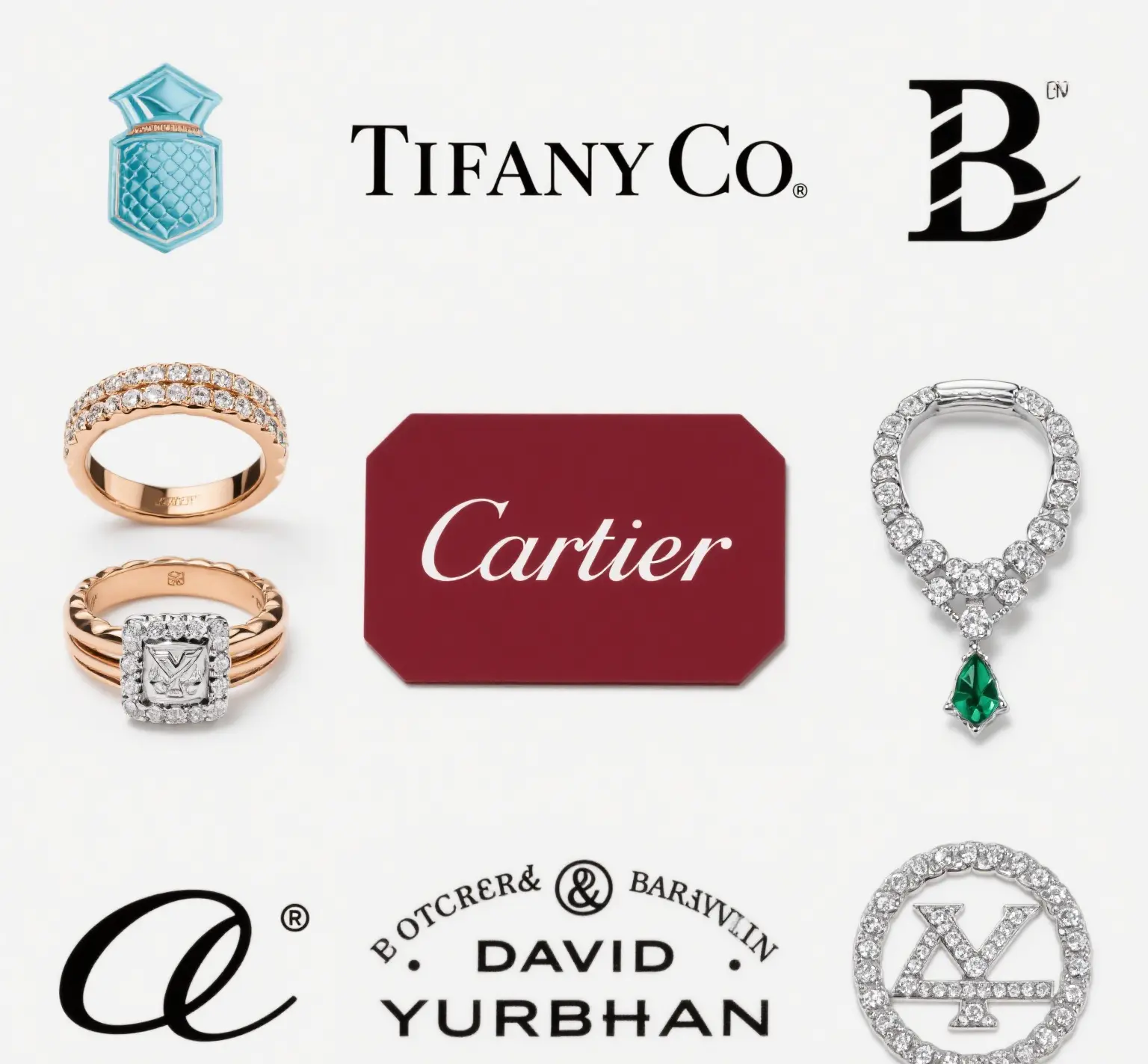
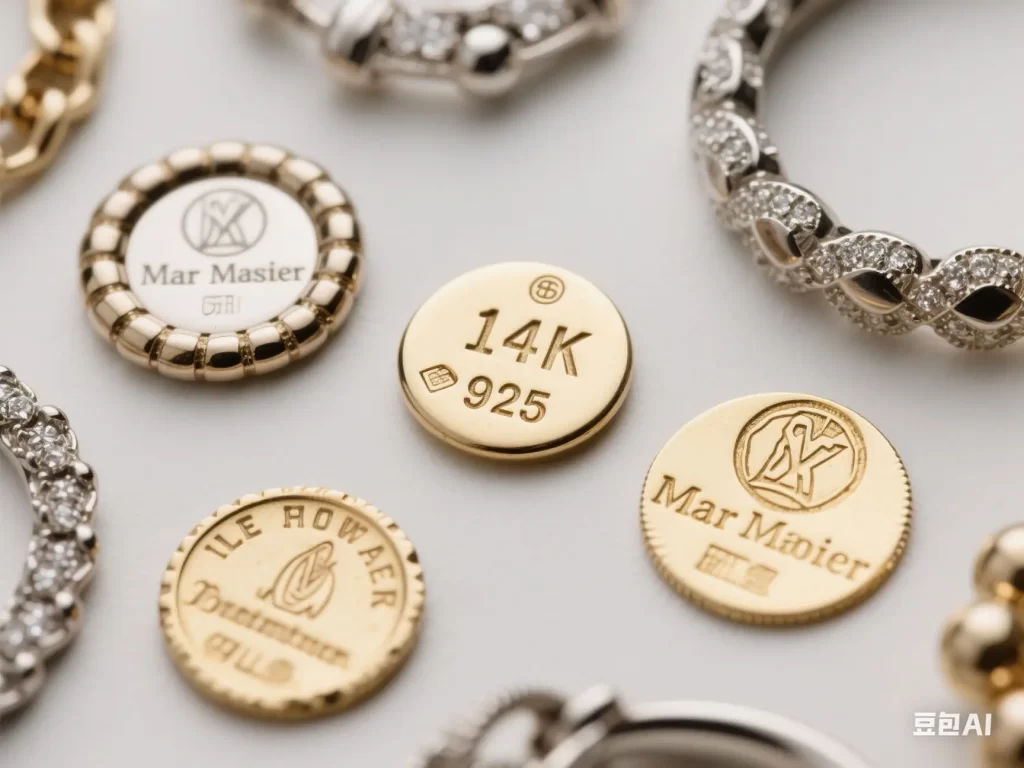
Key Takeaways
- Jewelry maker’s marks are like fingerprints that act as stamps to prove the authenticity, quality and origin of each piece. To collectors and buyers in the United States, these marks are very important.
- Read up on metal purity stamps such 10K, 14K and 18K for gold and .925 for sterling silver. This understanding will help you determine what quality and value of jewelry you should be expecting.
- Maker’s marks, typically initials or a logo, are an essential step in following the trail to the jeweler or brand. This contributes to the rich history and provenance of the piece.
- Jewelry marks have a rich history, with today’s systems in the U.S. keeping traceable identification and consumer protection within arm’s reach.
- You can usually spot these marks on the interior of rings, on the clasp of necklaces, or on the back of pendants. Never forget to examine these sections closely!
- If you ever see any dubious or weird markings, take them to your local jeweler or appraiser to verify that you’re not being scammed or misled.
Understanding Jewelry Makers Markings: Your Key to Authenticity
Jewelry makers markings are like fingerprints that act as stamps to prove the authenticity, quality, and origin of each piece. To collectors and buyers in the United States, these jewelry makers markings are extremely valuable for verification. Understanding how to read and interpret jewelry makers markings can help you avoid counterfeits and make informed purchasing decisions.
Explore Hallmarks and Symbols
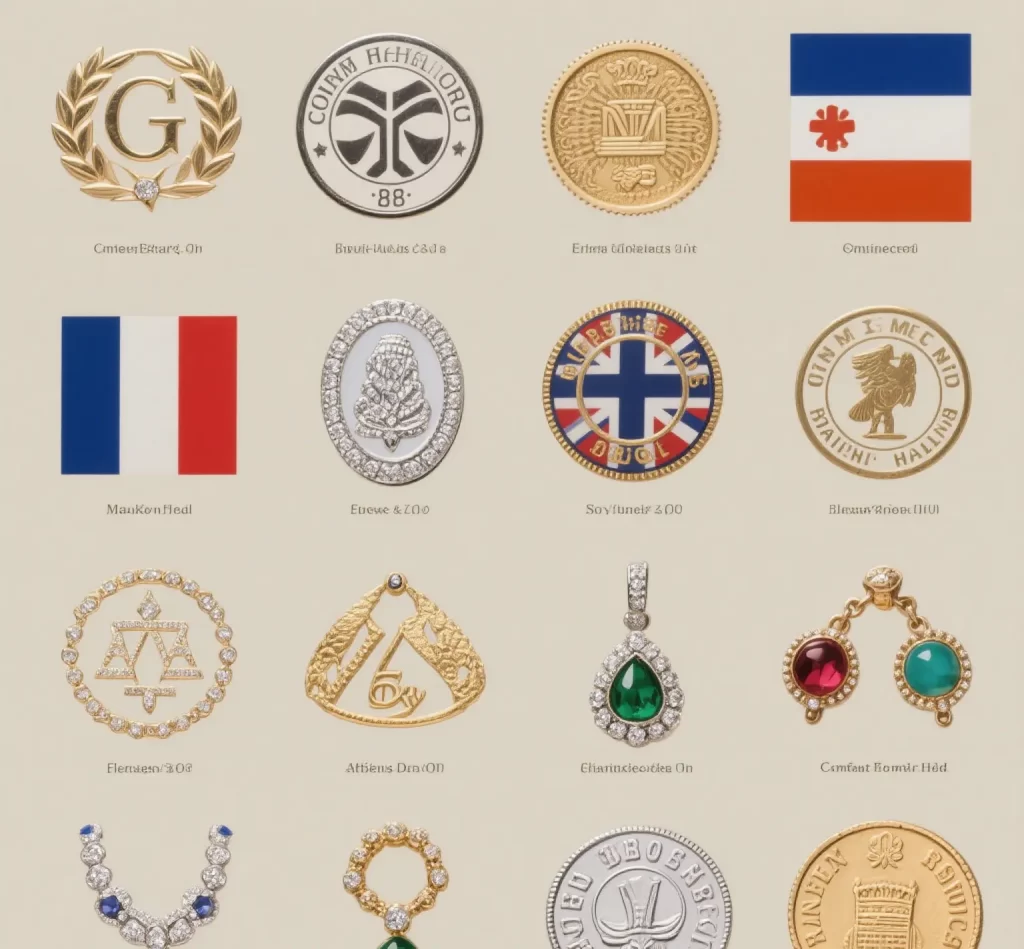
Tips to Spot Counterfeits
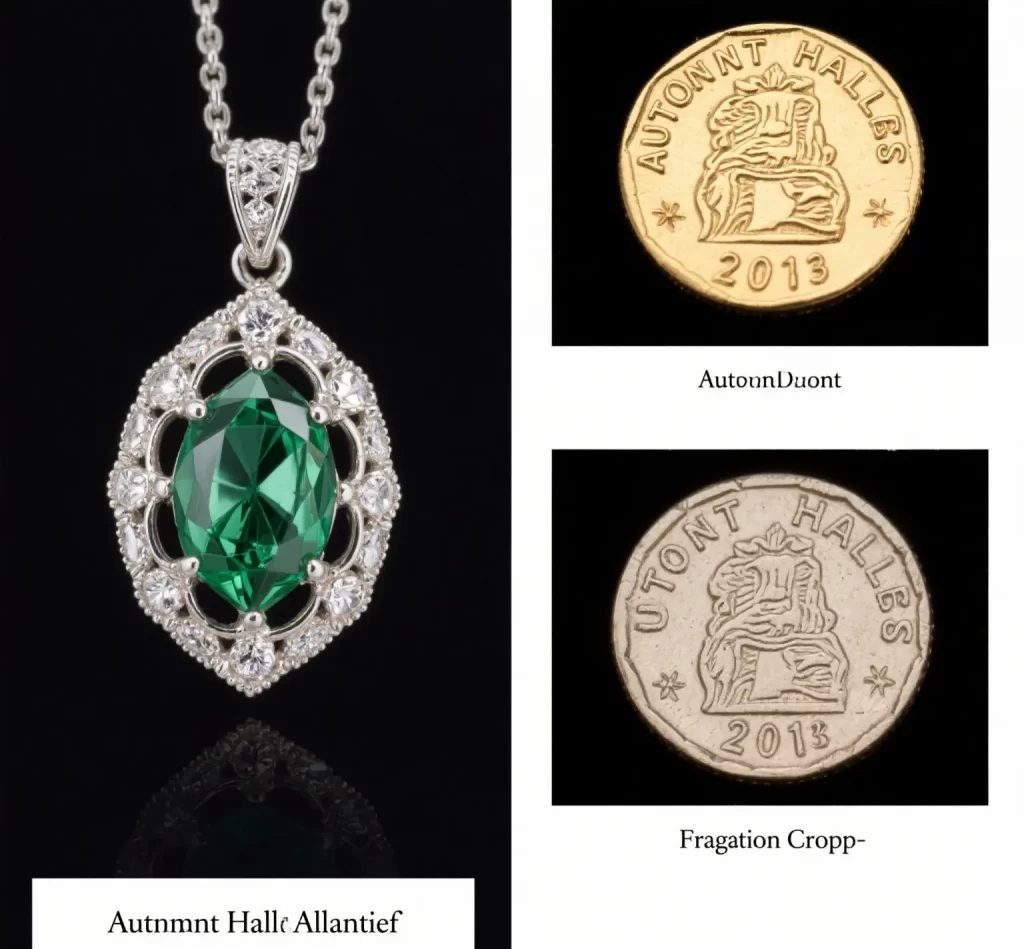
In a nutshell, the best way to check for fake jewelry is to familiarize yourself with real makers’ marks. Authentic marks should always be deep, clear and easy to read, commonly seen on a clasp or pendant backside.
Fakes may have marks that are weak, poorly placed or misspelled, such as “STERING” for “STERLING.” Authentic gold jewelry should have a stamp that reads “14K” or “18K.” Conversely, counterfeit items might display unusual numbers or letters. Occasionally, these marks are absent or stamp them in strange locations, which is a dead giveaway.
POWER TIP Inspect with a loupe or jeweler’s magnifier to spot fine details. As many U.S. Pieces do have the maker’s name and metal content listed, whenever this information is absent it can be a tip-off.
Interpret Jewelry Stamps
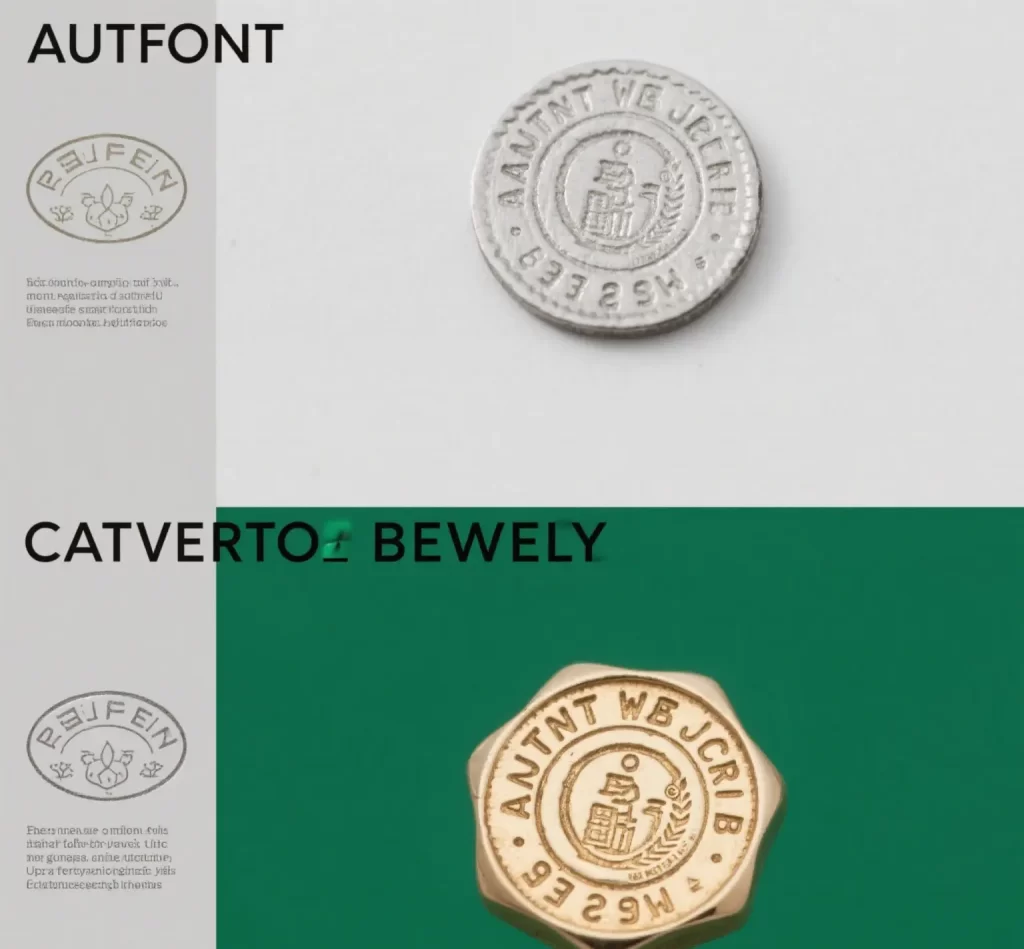
Jewelry stamps, which you can usually find located inside rings or on the triggering clasp of a chain, indicate important information regarding a piece. These stamps can serve to indicate metal content, such as “14K” for 14-karat gold or “.925” for sterling silver.
During the last century, jewelry makers began to use stamps to indicate their work. In the U.S., for example, stamps such as “PLAT” or “PT950” indicate platinum content. Markers, usually in the form of an animal or other small symbol, can indicate the country or even the year of origin. Vintage or estate pieces may have worn or faded stamps, but with close examination under adequate lighting usually does the trick.
Understanding these markings can assist buyers in identifying authentic, quality metals, tracking makers and checking value.
Learn About Gold Stamps
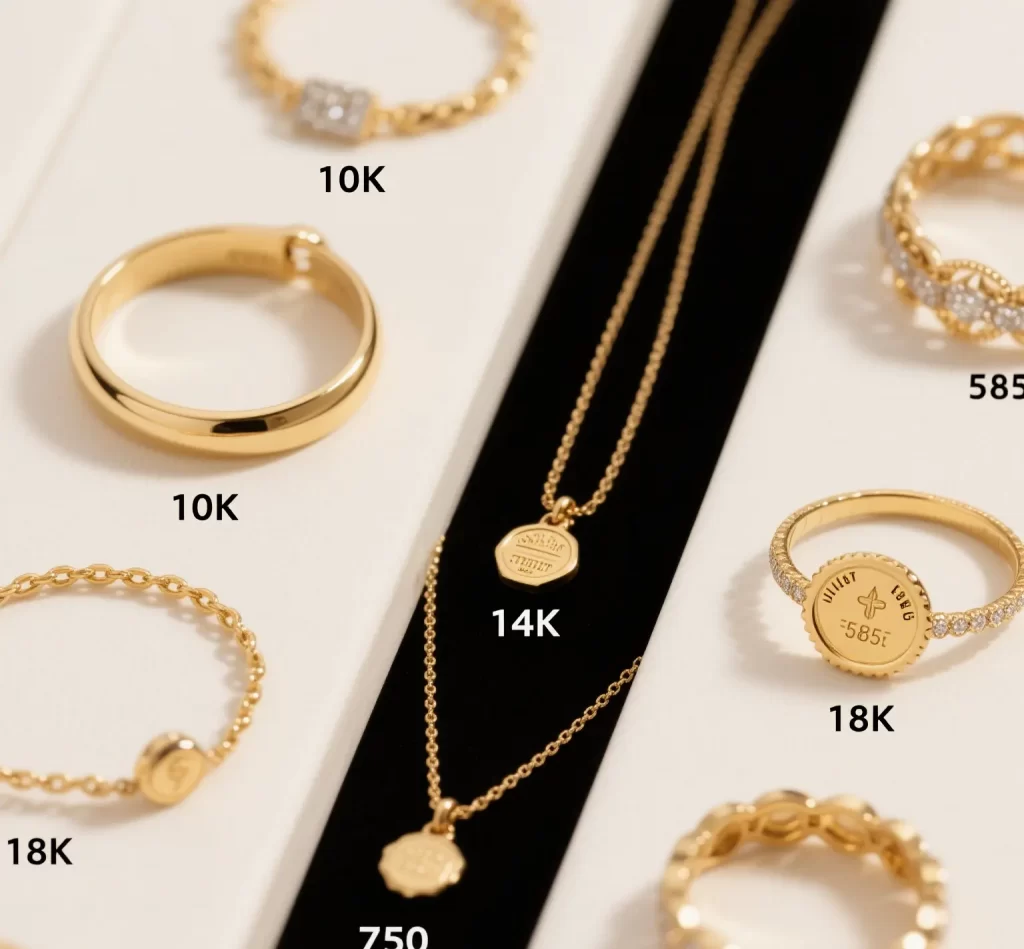
Gold stamps, also known as jewelry stamps, provide valuable information regarding the quality and value of the gold in jewelry. These marks indicate the purity of the gold, usually in the form of a number such as “585” for 14K or “750” for 18K. U.S. makers often use stamps like “10K,” “14K,” or “18K” to indicate the amount of gold. Alternatively, you might find “GF” (gold filled) or “GP” (gold plated), which signifies that the gold is only applied to the surface.
These stamps can also indicate a maker’s mark or a hallmark from an independent testing laboratory. Typically, the marks are placed on the clasp, inside rings, or close to the catch on chain necklaces. Such markings protect consumers by informing them about what they are purchasing while fostering confidence in the marketplace.
Jewelry makers often use small symbols, letters, or numbers as makers markings. These markings provide important clues about who made a piece, what kind of metal it was made from, and where it came from.
These marks are often made up of initials, a logo, or the type of metal, such as “925” for sterling silver or “14K” for gold. In the United States, these markings are important for buyers, sellers, and collectors alike.
Identifying and interpreting these marks is essential for ensuring authenticity and determining the original creator. The following section offers some clues for recognizing them.
What Are Jewelry Maker’s Marks?
Jewelry maker’s marks, referred to as jewelry maker’s stamps, are tiny engravings stamped onto jewelry to indicate who created the jewelry. These marks may be as basic as initials or as intricate as a company’s logo. Think of them as your ABC’s or hieroglyphics.
They could even be in the shape of a silhouette that is stylized to match a given company or artist. It was not until 1961 that the United States adopted a law mandating that makers use such marks. This amendment made it much easier for the public to tell who made each piece.
They are the most important factor in determining whether a piece is authentic and establishing its provenance. For instance, HonHo Jewelry Manufacturer™, based in Guangzhou, China, employs custom marks on their stainless steel, brass, and silver jewelry.
Recognizing a maker’s mark can further indicate where or when a piece was produced.
Decoding Metal Purity Stamps
Understanding metal purity stamps Metal purity stamps tell you which metal and the level of purity in the jewelry item. For gold, “10K,” “14K,” and “18K” are commonly found in the U.S., indicating 41.7%, 58.3%, and 75% gold respectively.
European marks such as “585” indicate 58.5% gold content. Silver generally employs “925” for sterling (92.5% silver), “S999” for almost pure, and “S800” for 80%.
For example, platinum is stamped “Pt950,” indicating 950 parts per thousand (95%) purity. Since marking regulations vary from country to country, such as with British hallmarks, understanding stamps takes a bit of expertise.
Here are common marks and meanings:
- 10K, 14K, 18K – Gold purity
- 925 – Sterling silver
- S999 – Fine silver
- Pt950 – Platinum
Unmasking the Maker: ID Marks
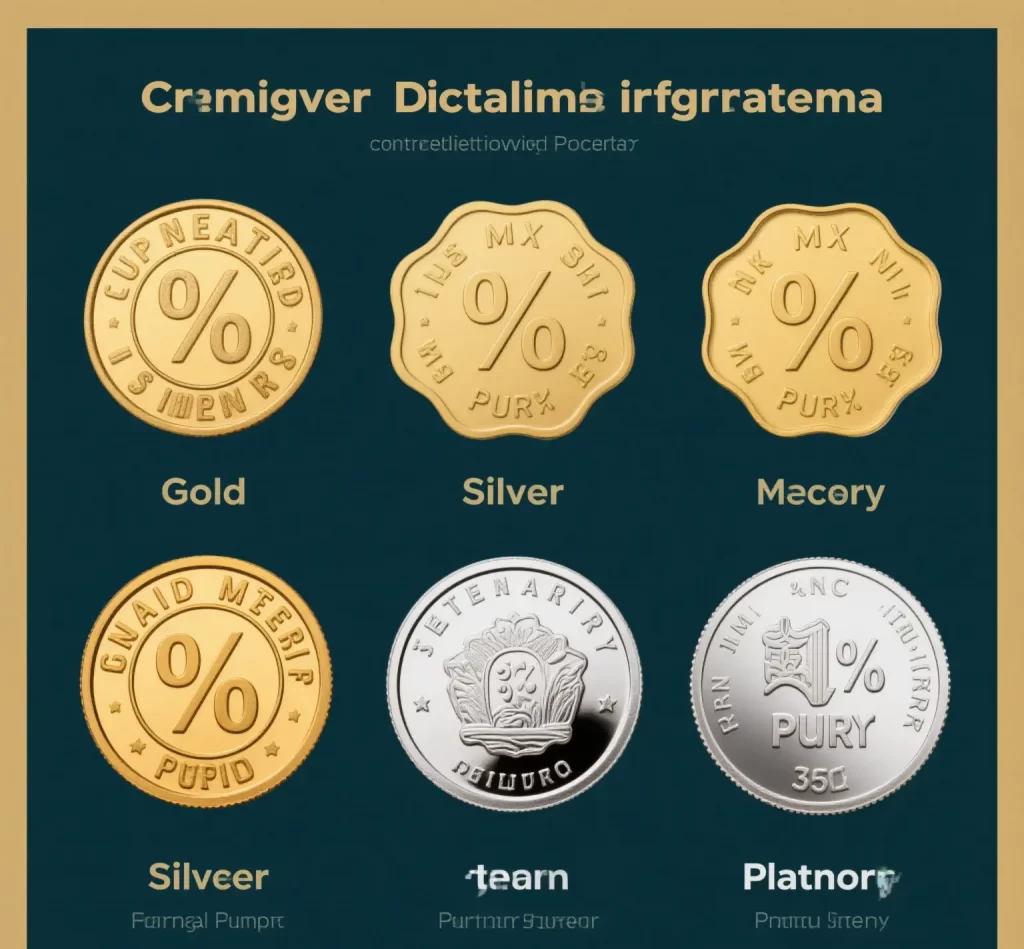
Just as a jeweler’s own mark would, maker’s marks serve as a sort of invisible label that indicates the creator of a work. These tiny marks are usually tucked away around clasps or on the reverse of objects. Not only do they tell us who made it, but they often give away hints as to when and where it was made.
Other logos and initials are a homage to well-known international houses such as Tiffany & Co. Cartier. Some opt to replace their names with a symbol or shape. Finding these marks is not always easy.
To further simplify the process, refer to guides, or look to guides for American, English or Mexican marks. Here’s a short list:
- Tiffany & Co.: “T & Co.”
- Cartier: “Cartier”
- Georg Jensen: “GJ”
- David Yurman: “DY”
- Fabergé: “Fabergé”
A Quick History of Jewelry Marks
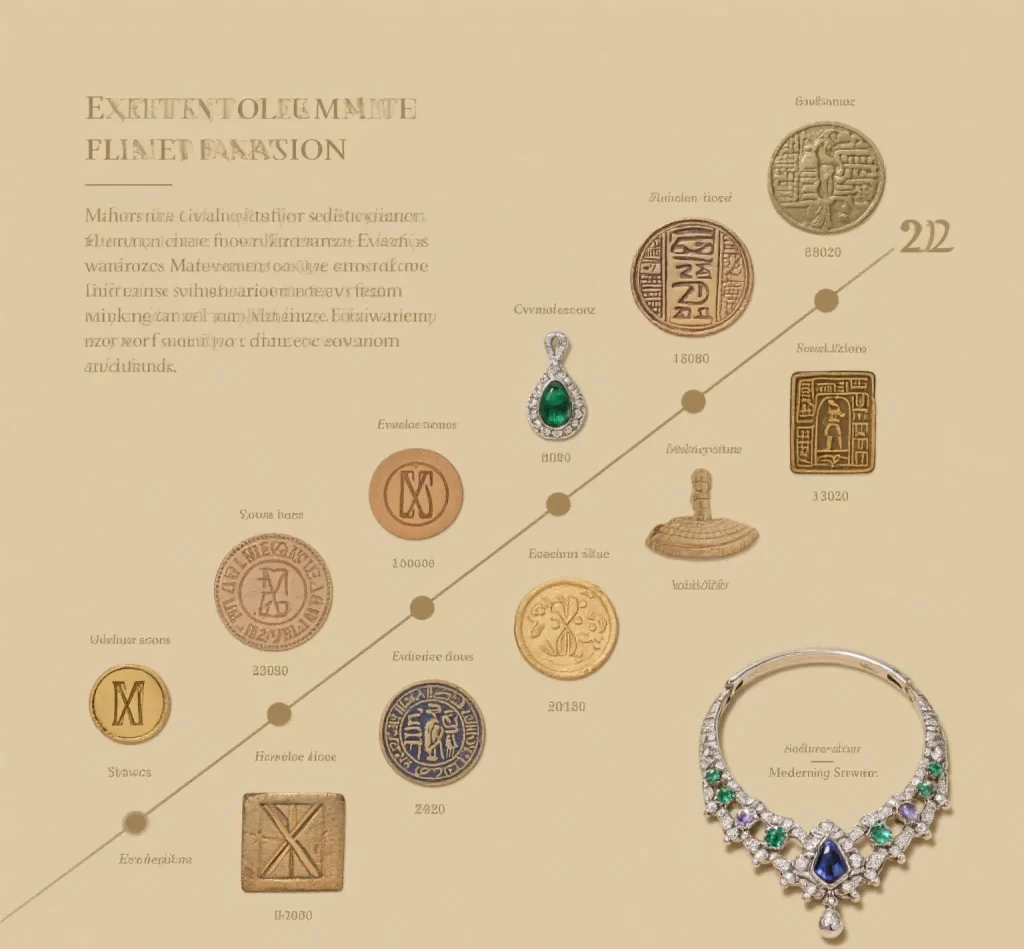
Jewelry marks date back thousands of years, with origins in ancient Egypt, Rome and Greece. Artisans stamped coins or used other identifiable marks as proof of their skill and the metal used.
By the 14th century, Great Britain instituted rigid hallmarking with date letters and lion marks for silver purity. Poinçon d’ état France first began using the eagle’s head for 18k gold in 1838.
In June 1906, the U.S. Finally passed a National Gold and Silver Stamping Act. The intent of this law was to implement unambiguous purity marks, like “18k” and “750.
Beginning in 1961, U.S. Makers were required to include a maker’s mark. Now, the Hallmarking Act of 1973 regulates laws around the globe.
Assay offices assayed, tested, and stamped metals, ensuring buyers received exactly what they paid for. HonHo Jewelry Manufacturer in China adheres to these standards, in all metal grades.
Where to Find These Tiny Clues
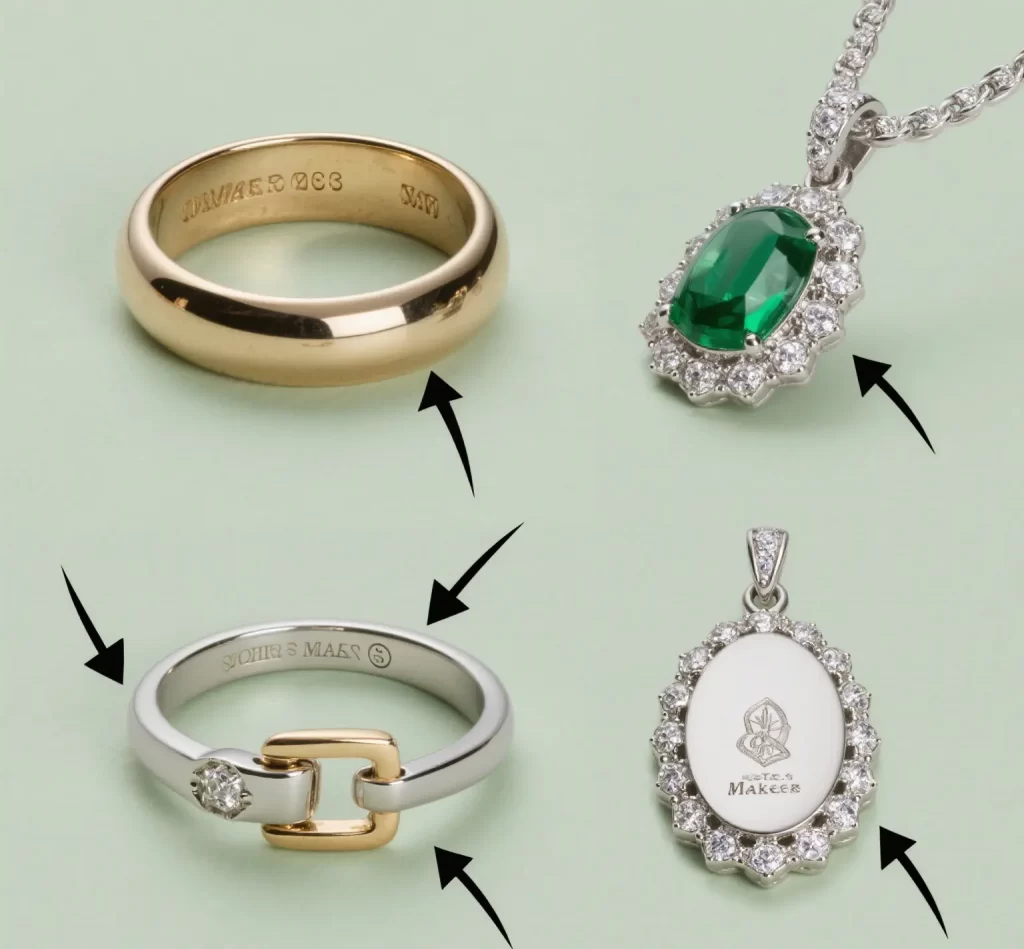
Jewelry maker’s marks frequently conceal themselves in plain view. You can often spot them hidden on the interior circumferences of bands or on the catch of a necklace. Hollow stamps like these are commonly found on the reverse side of pendants.
You can find them, too, around a pin’s hinge or on the c-catch of French brooches. English antique rings typically have hallmarks on the inside of the ring, whereas French rings tend to wear them on the outside of the band. French earrings may be allowed to bear two hallmarks on each one.
Often these marks are very light, poorly struck, or obscured by restoration. A detailed inspection should cover visible areas as well as difficult-to-detect locations. It is so much easier when you know when and where the piece was created.
- Use a loupe or magnifier for tiny marks
- Check for signs of repair
- Compare marks with trusted references
- Search both visible and hidden spots
Reading the Signs: Interpretation Tips
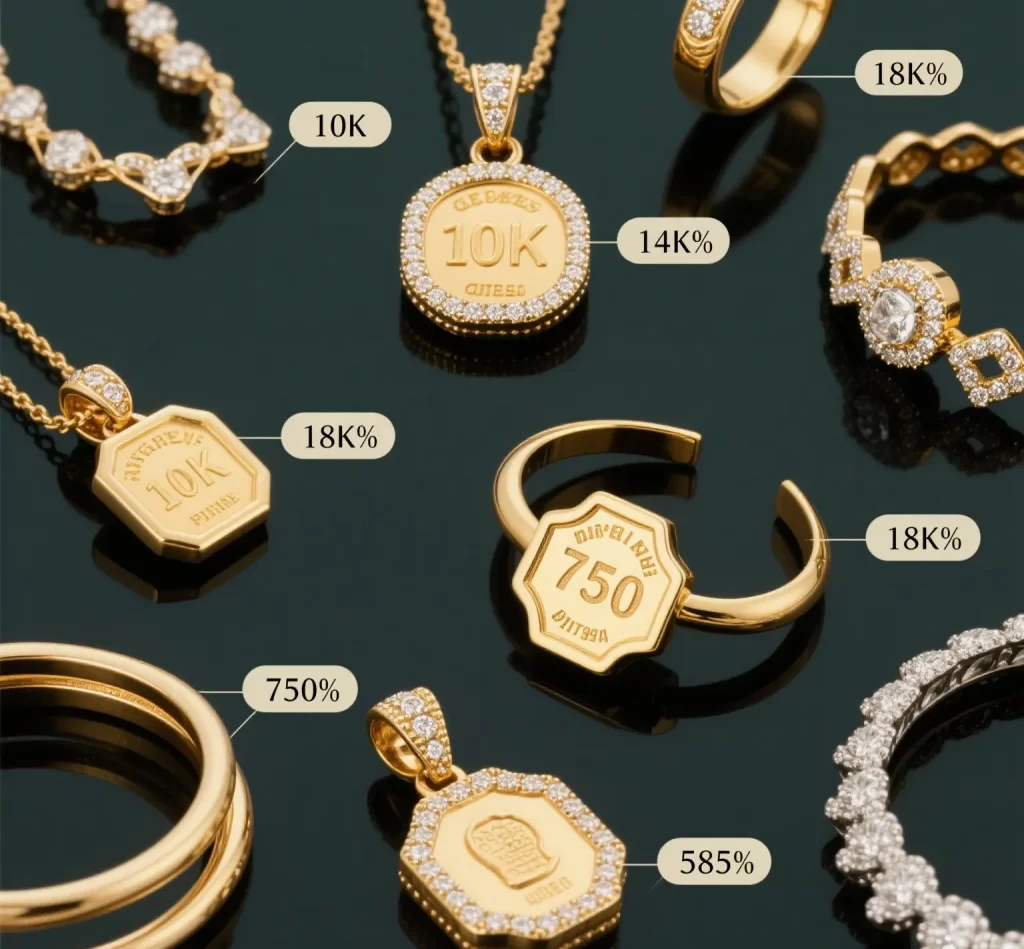
An understanding of jewelry markings can help you avoid disappointment when purchasing items sight unseen. Hallmarks typically indicate information such as metal purity, origin, and makers mark code.
For silver, a “925” stamp indicates it’s sterling silver. We’re all familiar with gold pieces that make notations such as 10K or 24K to indicate the purity of the piece. Platinum will generally have Pt950 or Pt900 markings.
Other things from the UK, such as ceramics, have a date letter to indicate when it was manufactured. Maker’s marks may include initials, a symbol, or a name.
As an example, HonHo Jewelry Manufacturer in China often marks their stainless steel and 925 silver jewelry very clearly. Conversion tables and rules of thumb guides assist in comparing marks from different geographic areas or manufacturers.
Marks of Trust vs. Deception
Jewelry markings have a significant influence on assisting purchasers in distinguishing genuine products from counterfeits. Hallmarks are a consumer protection that can be traced back in the UK over 800 years. They mark what kind of metal they made, and they name the producer.
True brands have definitive and uniform guidelines for marking. A good illustration of this is HonHo Jewelry Manufacturer China, known for providing professional custom stainless steel, brass, 925 silver jewelry and so on. However, not every mark is authentic.
Some, such as steel punches re-engraved from antique London hallmarks, are enough to deceive even the most experienced of buyers. Experts at the Goldsmiths’ Hallmark Authentication Committee carefully review marks. They do a good job of clearing up the confusion when different manufacturers use the same ones.
When marks are not right, consult with a trademark professional.
Conclusion

Jewelry maker’s marks provide immediate indications as to the origin and material content of a piece. These small marks can identify genuine gold, silver or platinum, and assist in identifying the originator of the piece. By knowing what to look for, buyers can avoid counterfeit metals and unscrupulous merchants. If you see “925” stamped on a ring, you know that it’s actually high quality sterling silver.
On the other hand, markings such as “Tiffany & Co.” are immediately linked to a prominent establishment. Historic or scarce marks can even enhance a piece’s provenance and value. Simply having to read these marks, however, sharpens your eye. It protects you, whether you’re buying from us, selling to us, or just enjoying the knowledge of what you’re wearing.
Have an antique or vintage piece you’d like evaluated? So grab a loupe, explore some resources, and discover what stories your jewelry has to tell.
Frequently Asked Questions
What is a jewelry maker’s mark?
A jewelry maker’s mark is a unique identifier that represents the company or artisan who crafted the jewelry item, helping buyers authenticate its legitimacy and trace its origin.
How can I tell if a jewelry mark means real gold or silver?
Check for purity marks, such as the gold hallmark “14K” for gold or “925” for sterling silver, which indicate the metal’s content according to U.S. Law. To ensure you are getting a genuine jewelry item, always purchase from reputable sources.
Where are maker’s marks usually found on jewelry?
Where are jewelry makers marks typically found on jewelry? You might see these gold hallmark identifiers on the clasp of a necklace and the back of a pendant or earring. Look at more hidden or less noticeable spots for these small jewelry stamps or engravings.
Why are jewelry maker’s marks important?
Maker’s marks, such as jewelry stamps and gold hallmarking, authenticate pieces, identify their creator, and assist in valuing them. Their importance shines through for collectors, buyers, and those avoiding misrepresented jewelry.
Can fake jewelry have fake maker’s marks?
Short answer, yes, counterfeit jewelry does include fake jewelry makers marks. This is one of the reasons why it is so important to look for consistency, seek expert advice, and purchase from trusted American jewelry manufacturers.
Are U.S. jewelry marks different from other countries?
Are U.S. jewelry makers marks different from those in other countries? Some countries utilize a different numbering system or employ letter markings and symbols. If you are uncertain, always authenticate these jewelry stamps, especially if they are implied to be foreign.
How do I research a jewelry maker’s mark?
Consult online databases, jewelry reference books, or take a trip to a local jeweler in the U.S. They can provide insights into jewelry makers marks, what the mark stands for, and information on the maker’s past and repute.
share this recipe:
Still hungry? Here’s more

Gold Filled vs Vermeil Guide Differences Durability and Value
What Is Gold Filled Jewelry? Gold filled jewelry is my go-to recommendation when someone wants

How Much for a Gold Necklace 2026 Price Guide and Tips
Understanding Gold Purity and Karats When people ask “how much for a gold necklace?”, the

Spiritual Jewelry Symbols Guide- Meanings and How to Choose
How to Use This Spiritual Jewelry Symbols Guide Spiritual jewelry only works for you when
Ready to Design Your Own Jewelry?
Have an idea in mind or need help shaping it? From sketches to finished pieces, our custom jewelry team will work with you step-by-step to bring your vision to life.
